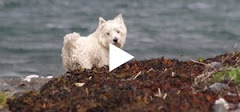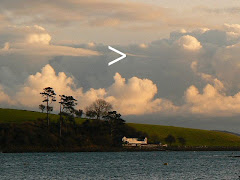In the Spring of 2006, my editor at Blackstaff Press was good enough to ask if I had any preferences for the look and feel of my first book, The Blue Cabin. This is normally done, if at all, as a courtesy because as many first time authors are horrified to discover, their contract invariably gives control of both title and cover design to the publisher.
At our meeting to discuss this, I took along just one book: the Sort Of Books paperback version of The Summer Book, by Tove Jansson (1972). It has a matt finish and end-flaps, which I always think invest a paperback with the resolved and grown-up feel of a hardback, without the formality - a nice combination for which I argued hard, without success, when we had the same discussion about The Blue Cabin's successor, Still On The Sound, three years later.

But I would love to think that there is more of Jansson's book in mine than just the cover. Her writing style has inspired me since I first read The Summer Book seven years ago. Her prose is so understated that one reviewer, missing the point, called the book 'bland', and another, with more acuity, 'an instant classic.' Of course, I go with the latter: I doubt whether I will ever tire of this deceptively simple tale of a grandmother-granddaughter relationship, played out on a small island in the Gulf of Finland over the course of a summer.
The word paintings in The Summer Book are rendered with the eye of an artist, which she was, and the intimacy of direct experience - Jansson lived for many years on just such an island - and it's no surprise that throughout her long career (she died aged 87 in 2001) as writer, artist and cartoonist, Tove Jansson considered herself, first and above all, a painter.















